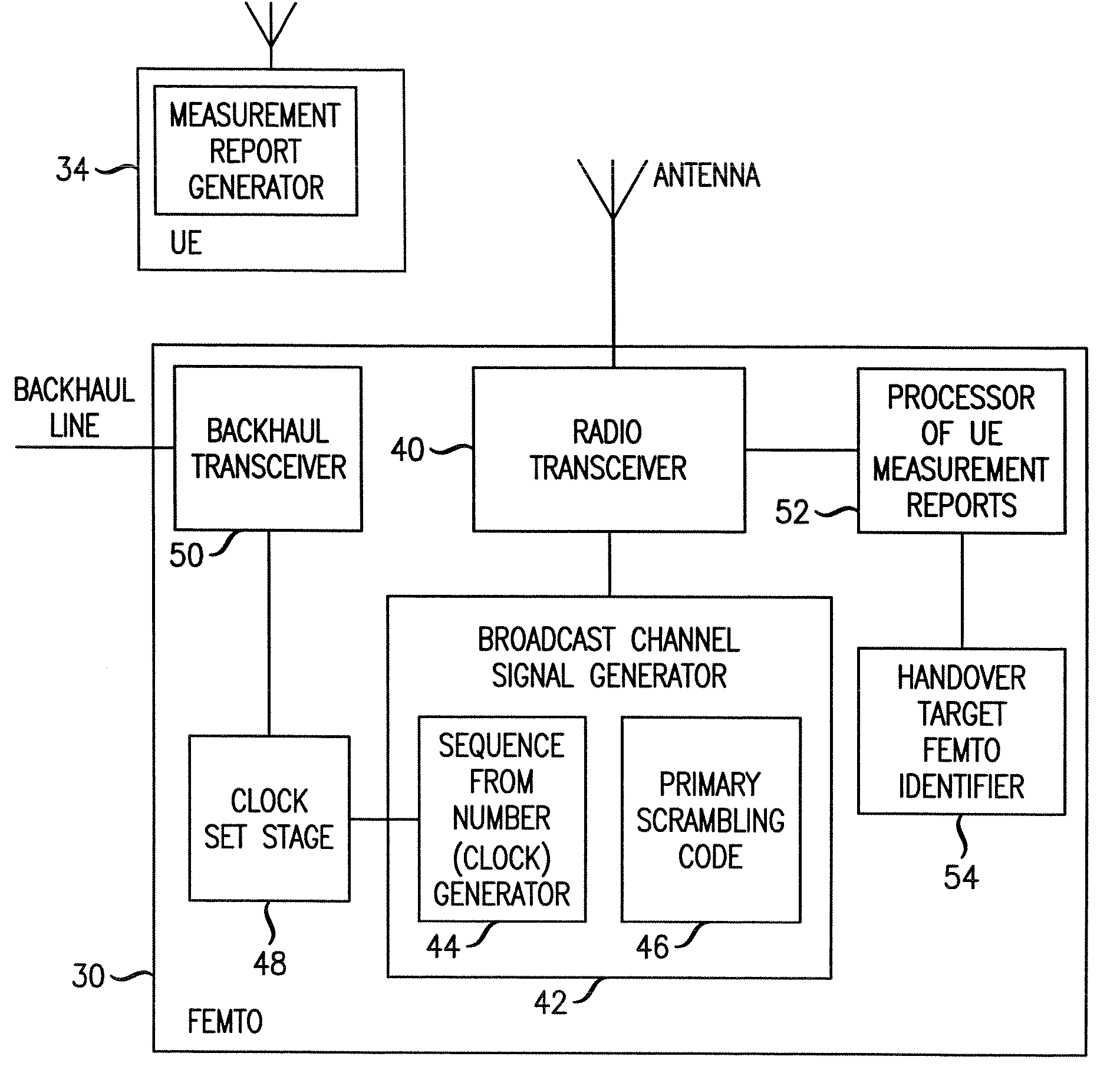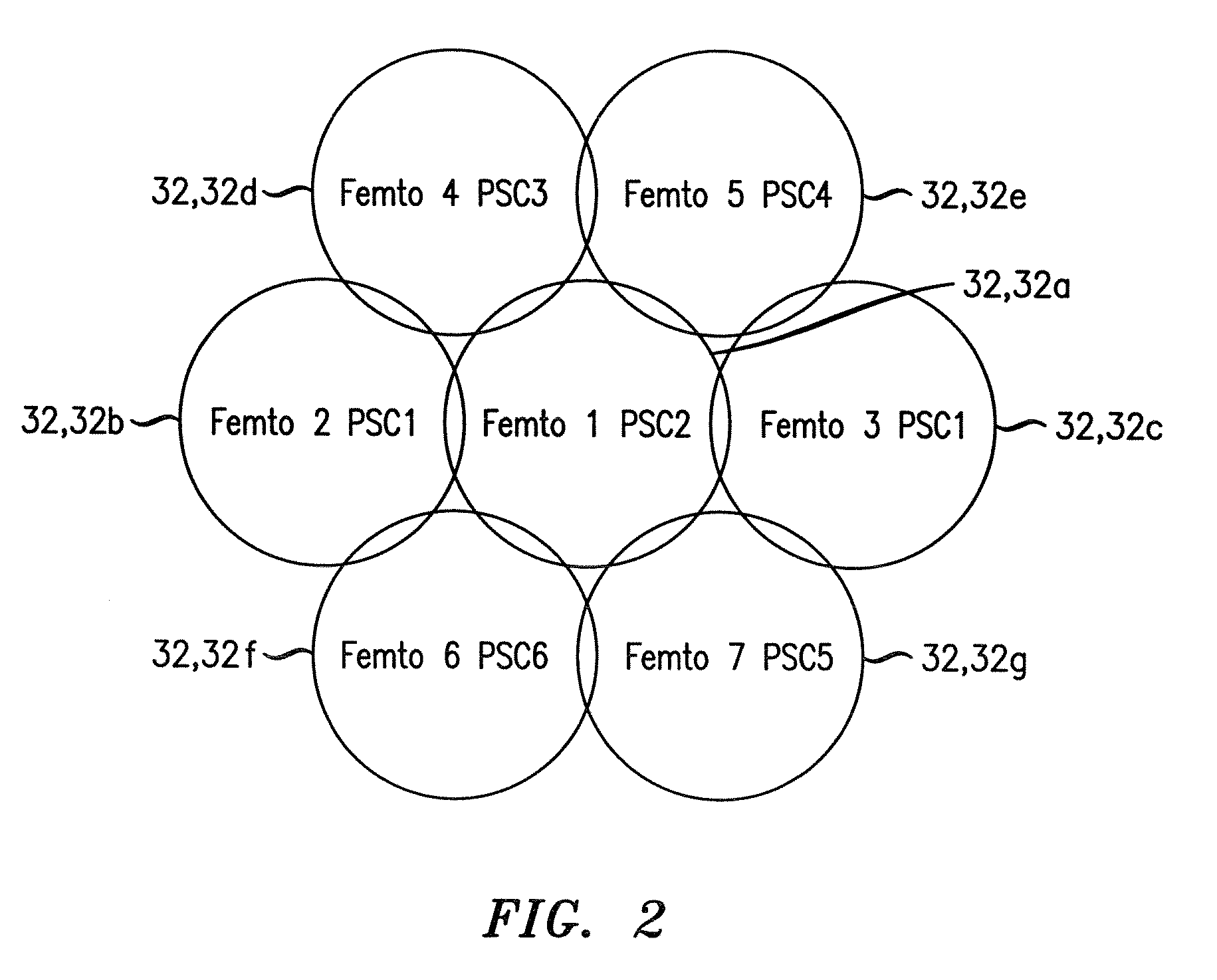Method of identification of a femtocell base station as a handover target, and apparatus therefor
a technology of femtocell base stations and target handovers, applied in the field of wireless telecommunications, can solve the problems of waste of network resources used in handover attempts to other femtocells than the one that is successful, and the availability of few primary scrambling codes (pscs), so as to reduce delays and block or drop calls.
- Summary
- Abstract
- Description
- Claims
- Application Information
AI Technical Summary
Benefits of technology
Problems solved by technology
Method used
Image
Examples
Embodiment Construction
[0029]We now describe a network including femtocell base stations then look in greater detail at a femtocell base station and the relevant operation of the femtocell base station.
Network
[0030]As shown in FIG. 1, in one communication network 20, there are two types of base stations (often denoted BS or BSs): macrocell base stations and femtocell base stations. One macrocell base station 22 for wireless telecommunications is shown for simplicity in FIG. 1. The macrocell base station has a radio coverage area 24 that is often referred to as a macrocell. The geographic extent of the macrocell 24 depends on the capabilities of the macrocell base station 22 and the surrounding geography.
[0031]Within the macrocell 24, each femtocell base station 30 provides wireless communications within a corresponding femtocell 32. A femtocell is a radio coverage area. The radio coverage area of the femtocell 32 is much less than that of the macrocell 24. For example, the femtocell 32 corresponds in size...
PUM
 Login to View More
Login to View More Abstract
Description
Claims
Application Information
 Login to View More
Login to View More - R&D
- Intellectual Property
- Life Sciences
- Materials
- Tech Scout
- Unparalleled Data Quality
- Higher Quality Content
- 60% Fewer Hallucinations
Browse by: Latest US Patents, China's latest patents, Technical Efficacy Thesaurus, Application Domain, Technology Topic, Popular Technical Reports.
© 2025 PatSnap. All rights reserved.Legal|Privacy policy|Modern Slavery Act Transparency Statement|Sitemap|About US| Contact US: help@patsnap.com



